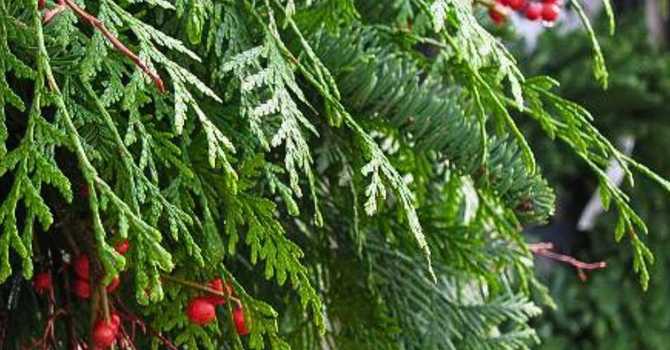
October is an important month for many things in our gardens. Here are the top 10 projects to tackle:
1. It’s the last chance to plant garlic for harvest next July. Raised beds, sandy soil and a sunny location are key. Russian garlic is quite successful in our area, but there are many other delicious hardneck types that you can try! Plant at a depth 3 to 4 times the width of the clove and about 10-12cm (4-5″) apart.
2. For colour in late December and January, plant yellow winter aconites and snowdrops as soon as possible. They are best planted in and around shrubs or evergreen perennials, like Japanese azaleas, dwarf conifers, euphorbias, colourful heucheras, and sedums, like golden ‘Angelina.’
3. While the ground is soft, aerate your lawn and apply ¼” of washed sand (rake it in). To tone up your lawn, keep it green and help it bounce back quickly in the spring, apply a controlled-release nitrogen fertilizer like 32-0-10. Now is also the time to apply Dolopril or organic eggshell lime to our lawns to prevent the soil from becoming too acidic over the winter months. Should you be feeding, apply the fertilizer now and then wait three weeks to apply the lime. If you’re not feeding, liming can be done now. Do not apply both at the same time.
4. Bare patches in our vegetable gardens could be planted with either fall rye or Rejuvenation Mix (but get it planted quickly!) that actually fixes nitrogen levels in the soil as it grows. These are great organic ways to improve the quality of your soil for next year. Simply turn it all over into itself in spring, and you’re off to a great start for the season ahead.
5. Tidy up your roses for winter by simply pruning lightly (about 2 to 3 feet) and by cleaning out any dead or weak wood. Climbers should be retrained on arbours and trellises and cut back to about 4 to 6 feet. Leave only 4 to 5 canes and cut out the rest. When the temperature really starts to drop, normally in early November, apply about 12 to 15” of protective mulch or even soil over the bud unions. Tree roses need to be wrapped with a cylinder of wire mesh from top to bottom and sawdust or bark placed on the inside to protect both the top and bottom graft. Cutting back rose stems too hard will invite frost into the tender stems, which we don’t want. So just tidy things up and protect the grafts for now!
6. Most hedging cedars, junipers, and other non-bud forming conifers can be tidied up and pruned to make them less susceptible to heavy snow damage. Pruning of spruce trees, firs, and pines should be left until the end of May. Non-flowering broad-leaved plants, like laurels, photinias and boxwood, can also be tidied at this time of year with a soft pruning. With so many hedging cedars stressed from the summer heat, a little controlled-release nitrogen lawn food applied now will help them.
As soon as the foliage dies down on your dahlias, lift and protect the tubers. Canna roots should soon come in for winter, too. Cut tubers back to about 4″ from the soil level, carefully lift them out with forks, clean and dry them, then store in a cool 4.5°C (40°F), dry place over the winter.
8. All tropical indoor plants summering outdoors must start making the transition inside now. They need to be thoroughly checked for insects! ‘Hardy annuals’, like fuchsias, lantanas, geraniums and Angel Trumpets should be located in a cool 10°C (50°F) area with lots of light. Strip their leaves and keep them just moist.
9. As late summer and fall herbaceous perennials finish and look messy, prune them to the ground and apply compost or manures to build up the soil for next year. Plant winter pansies, violas and hardy evergreen perennials and grasses in bare areas for a great look all winter, and plant bulbs in among them for a real treat next spring.
10. Is fall a riot of colour in your garden? If not, look at all the outdoor colour potential in other gardens and in garden stores at this time of year, from compact Burning Bushes to tall thin fire engine red maples. Plant more reds, hot oranges and vibrant yellows to bring our autumn gardens alive.
Remember the pollinators! Food sources are getting a little lean for our pollinating friends. Great sources of pollen/nectar at this time of year are: asters, rudbeckia nitida ‘Herbstsonne’, late-blooming heliopsis, winter-flowering heathers, caryopteris, and mahonia. There are many summer blooming plants such as Rose of Sharon, nepetas and sedums still hanging on, so they do have some variety yet to enjoy!


